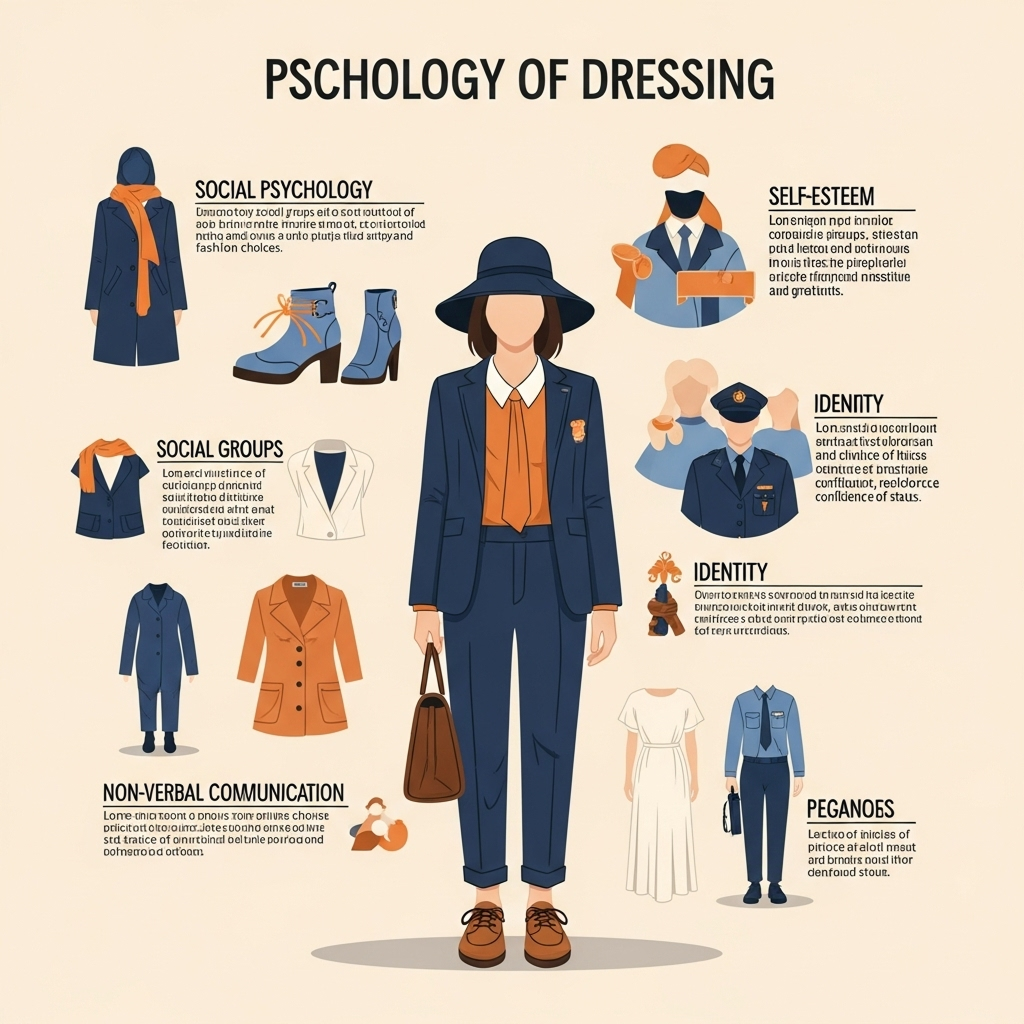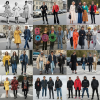
The Psychology of Dressing: How Our Clothes Shape Us and Our Perceptions
Fashion is often perceived as a superficial pursuit, a realm of fleeting trends and material desires. However, beneath the glossy surface lies a profound and complex interplay between what we wear and who we are. The act of dressing is not merely about covering our bodies; it’s a powerful psychological tool that influences our mood, boosts our confidence, shapes how others perceive us, and even affects our cognitive performance. Understanding the psychology of dressing reveals how our sartorial choices are deeply intertwined with our identity, emotions, and social interactions.
One of the most immediate psychological impacts of clothing is on our mood and emotions. This phenomenon, often referred to as “enclothed cognition,” suggests that the clothes we wear can systematically influence our psychological processes. Consider the difference in how you feel when lounging in sweatpants versus when dressed in a sharp suit or an elegant dress. The former might evoke relaxation and comfort, while the latter can instill a sense of formality, confidence, or preparedness. Studies have shown that wearing specific types of clothing can alter our emotional state; for example, wearing bright colors can uplift spirits, while soft, comfortable fabrics can induce a sense of calm. This connection between clothing and mood explains why many people opt for “comfort clothes” on a bad day or choose a power outfit for an important meeting – they instinctively understand the emotional leverage their wardrobe holds. Our clothes become a form of self-medication, a way to signal to ourselves how we want to feel.
Beyond internal feelings, clothing significantly impacts our confidence and self-esteem. When we wear something that fits well, is flattering, and makes us feel good, our confidence levels naturally rise. This isn’t just vanity; it’s a psychological boost that can affect everything from our posture to our assertiveness in social situations. The concept of a “power outfit” is a prime example of this. Donning a well-tailored suit or a meticulously chosen ensemble can make an individual feel more authoritative, capable, and ready to tackle challenges. This enhanced self-perception then translates into more confident body language, clearer communication, and a stronger presence, creating a virtuous cycle where positive feelings about our appearance lead to more positive outcomes. Conversely, ill-fitting or uncomfortable clothing can make us feel self-conscious and diminish our confidence, highlighting the importance of choosing garments that truly resonate with us.
The impact of clothing extends far beyond our personal feelings; it profoundly influences how others perceive us. Before we even utter a word, our clothing communicates a wealth of information about us. It signals our social status, profession, personality, cultural background, and even our current intentions. For instance, a person in a uniform immediately conveys their profession and authority, while someone in bohemian attire suggests a more free-spirited personality. These first impressions, largely based on appearance, are often formed in milliseconds and can be remarkably persistent. People make assumptions about our intelligence, trustworthiness, competence, and even our financial stability based on our dress. This phenomenon is why strategic dressing is crucial in professional settings, job interviews, and social events – we consciously or unconsciously use our clothes to manage others’ perceptions of us and to achieve specific social outcomes. Understanding this allows us to harness our wardrobe as a powerful tool for non-verbal communication.
Furthermore, clothing can influence cognitive performance. The “enclothed cognition” theory isn’t just about mood; it also suggests that wearing certain clothes can literally alter our thinking. A famous study, for instance, found that participants wearing a doctor’s lab coat performed better on attention-related tasks than those wearing regular clothes or a painter’s smock. The researchers suggested that the lab coat, associated with intelligence and carefulness, imbued the wearers with those very qualities. This indicates that our brains associate certain attributes with specific types of clothing, and by wearing them, we can activate those cognitive associations. This has implications for students studying, professionals working, or anyone looking to enhance their focus or creativity – sometimes, simply changing into “work clothes” can help shift our mindset and improve our performance.
Our relationship with clothing is also deeply tied to identity and self-expression. Fashion provides a creative outlet, allowing us to visually communicate who we are or who we aspire to be. It’s a form of personal branding, a way to tell our story without words. Our choices in style, color, fabric, and silhouette are all deliberate (even when seemingly unconscious) expressions of our individuality. For some, clothing is a way to conform and feel part of a group, while for others, it’s a means to rebel and stand out. This act of self-expression through dress is vital for psychological well-being, allowing us to affirm our identity and feel authentic in the world. It’s a dynamic process; as our identities evolve, so too does our style, creating a continuous dialogue between our inner selves and our outward appearance.
The social dynamics of clothing are also significant. Dress codes, uniforms, and trends all reflect the social norms and expectations of a given group or society. Clothing can act as a social marker, indicating membership in a particular subculture, profession, or social class. It can foster a sense of belonging and solidarity, as seen in team uniforms or shared fashion trends among friends. Conversely, it can also create barriers or reinforce social hierarchies. Understanding these social codes is essential for navigating various contexts and for effectively communicating within them. For instance, knowing when to dress formally or casually is a key social skill that prevents miscommunication and fosters positive interactions.
Finally, the act of shopping for and selecting clothes also has psychological implications. It can be a therapeutic experience for some, a creative pursuit, or a stress reliever. The process of curation, of building a wardrobe that reflects our taste and needs, can be a satisfying endeavor. However, it can also be a source of anxiety, particularly in a consumer culture that often promotes unattainable ideals of beauty and style. Understanding our personal relationship with shopping and consumption is part of understanding the broader psychology of dressing.
In conclusion, the seemingly simple act of putting on clothes is anything but. It’s a complex psychological process that influences our internal states, shapes our self-perception, dictates how others see us, and even affects our cognitive abilities. From boosting confidence to expressing identity, and from navigating social landscapes to impacting performance, our wardrobes are powerful tools. Recognizing this profound connection between fashion and the human psyche allows us to approach dressing with greater intention, harnessing its power to enhance our well-being and navigate the world more effectively.



Add comment